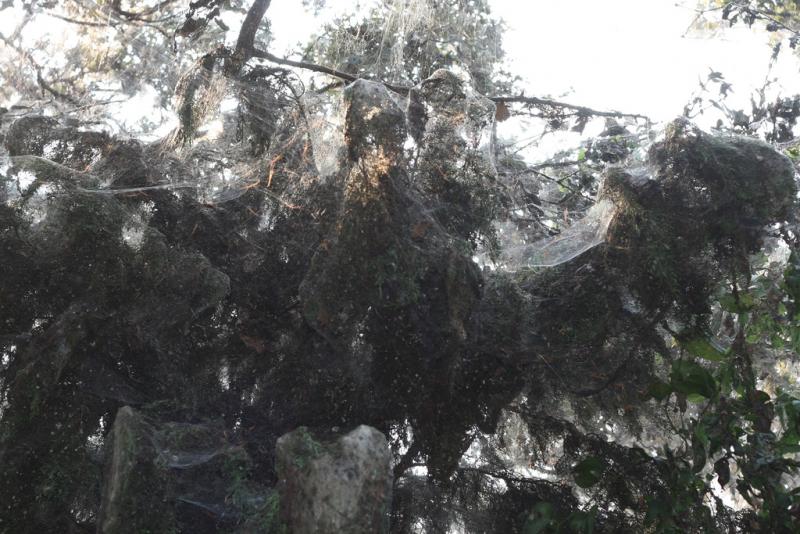- Series:Animals, Transcript English
Philippians 2:3
“Let nothing be done through strife or vainglory; but in lowliness of mind let each esteem other better than themselves.”
We can all understand why spiders like to live alone rather than with other spiders. Spiders consider any living creature of eating size appropriate to eat, even if that other creature is a spider. Since spiders are aggressive about eating, they are usually smart enough not to live too close to another spider.
 However, some Mexican spiders are a bit less self-centered. A few species of spiders build communal webs and share their prey with each other. Some of the female spiders are loving mothers toward their children. These spiders can only build their large communities in tropical areas where prey is plentiful.
However, some Mexican spiders are a bit less self-centered. A few species of spiders build communal webs and share their prey with each other. Some of the female spiders are loving mothers toward their children. These spiders can only build their large communities in tropical areas where prey is plentiful.
Each in this unusual species of Mexican spider builds its own “apartment” within the spider colony. However, it connects its orb-shaped web to the orb webs around it. These communities can be huge, having as many as 7,000 spiders. Each is responsible for defending its own “apartment” and capturing its own prey. But the fact that hundreds or even thousands of orbs are joined, gives each spider a better chance of capturing prey. An insect might bounce off a solitary web. However, when the only place the insect has to bounce is into another web, it’s inevitable that the insect will be captured.
While selfishness and survival of the fittest sometimes seem to be the way to come out ahead, they produce nothing productive. This offers us a hint of the truth that the Bible clearly tells us. There are general moral absolutes in the creation, including love for others.
Prayer:
Lord, thank You that this isn’t completely a dog-eat-dog world. Forgive me for the times I love myself more than You and at the expense of others. Give me your peace and help me love others as I love myself. Amen.
Notes:
K. A. Fackelmann. 1982. “The Social Spiders of Mexico.” Science News, Aug. 7, p. 87. Photo: A communal spider web that’s 200 yards across, found in Lake Tawakoni State Park, East Texas. Photographer: Brad Wofford. Licensed under the terms of the Creative Commons Attribution-Share Alike 2.0 Generic license.
